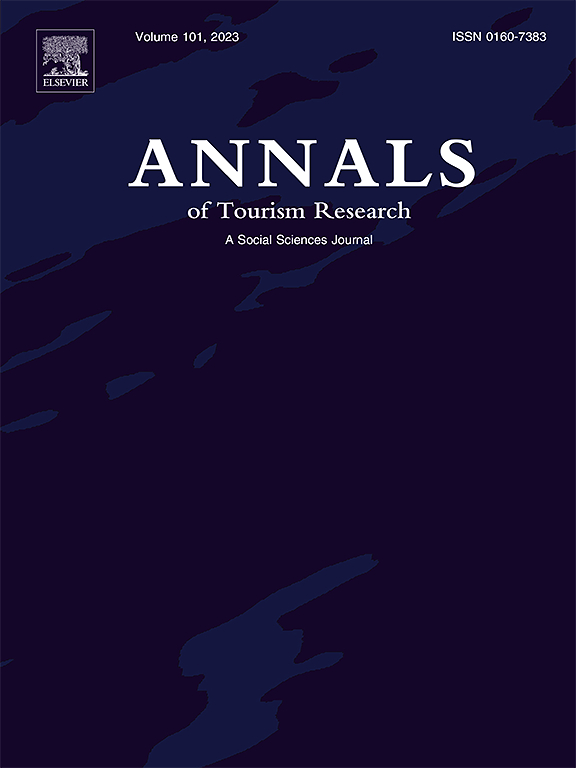衡量数字时代对拥堵的反应
IF 7.8
1区 管理学
Q1 HOSPITALITY, LEISURE, SPORT & TOURISM
引用次数: 0
摘要
城市正在经历游客数量的加速增长,以至于过度拥挤,这引发了人们对旅游目的地和居民的负面影响的担忧。关于过度旅游的学术讨论主要涉及环境破坏、基础设施超载和居民不满,往往忽视了游客如何经历过度拥挤。在考察时,游客体验主要是使用主观的自我报告工具,如问卷和调查来衡量的。本研究通过引入客观、实时、多方法的框架来解决这一问题,该框架集成了时空跟踪、可穿戴生理传感器和移动眼动追踪,以评估访客对实验室外各种密度和拥堵状况的情感和视觉反应。尽管由于COVID-19大流行期间的国际旅行限制,该试点实验是在当地参与者中进行的,但所开发的方法与更广泛地应用于旅游人群相关。结果表明,高访问量会影响访问者的情绪状态和视觉注意力。此外,研究提出上述方法不仅可以应用于因变量情绪唤醒,也可以应用于自变量密度和拥堵。通过将游客凝视作为衡量密度和拥堵的动态指标,本研究推进了理论,并为旅游目的地管理者和城市规划者提供了应对过度拥挤和提升游客体验的工具。本文章由计算机程序翻译,如有差异,请以英文原文为准。
Measuring reactions to congestion in the digital era
Cities are experiencing accelerated growth in visitor numbers to the point of overcrowding, raising concerns about negative effects on both destinations and residents. Academic discourse on overtourism primarily addresses environmental damage, infrastructure overload, and resident dissatisfaction, often overlooking how tourists experience overcrowding. When examined, tourist experiences have predominantly been measured using subjective self-report tools such as questionnaires and surveys.
This study addresses this gap by introducing an objective, real-time, multi-method framework that integrates spatiotemporal tracking, wearable physiological sensors, and mobile eye-tracking to assess visitors' emotional and visual responses to various conditions of density and congestion outside the laboratory. Although the pilot experiment was conducted with local participants due to international travel restrictions during the COVID-19 pandemic, the methodology developed is relevant for broader application to tourist populations.
Results show that high visitor numbers affect visitors' emotional states and visual attention. Furthermore, the study proposes that the aforementioned methodology can be applied not only for the dependent variable, that is, emotional arousal, but for the independent variable, density and congestion, as well. By presenting the tourist gaze as a dynamic metric to measure density and congestion, the study advances theory and offers tourism destination managers and urban planners' tools to cope with overcrowding and enhance the tourist experience.
求助全文
通过发布文献求助,成功后即可免费获取论文全文。
去求助
来源期刊

Annals of Tourism Research
Multiple-
CiteScore
19.10
自引率
9.10%
发文量
135
审稿时长
42 days
期刊介绍:
The Annals of Tourism Research is a scholarly journal that focuses on academic perspectives related to tourism. The journal defines tourism as a global economic activity that involves travel behavior, management and marketing activities of service industries catering to consumer demand, the effects of tourism on communities, and policy and governance at local, national, and international levels. While the journal aims to strike a balance between theory and application, its primary focus is on developing theoretical constructs that bridge the gap between business and the social and behavioral sciences. The disciplinary areas covered in the journal include, but are not limited to, service industries management, marketing science, consumer marketing, decision-making and behavior, business ethics, economics and forecasting, environment, geography and development, education and knowledge development, political science and administration, consumer-focused psychology, and anthropology and sociology.
 求助内容:
求助内容: 应助结果提醒方式:
应助结果提醒方式:


